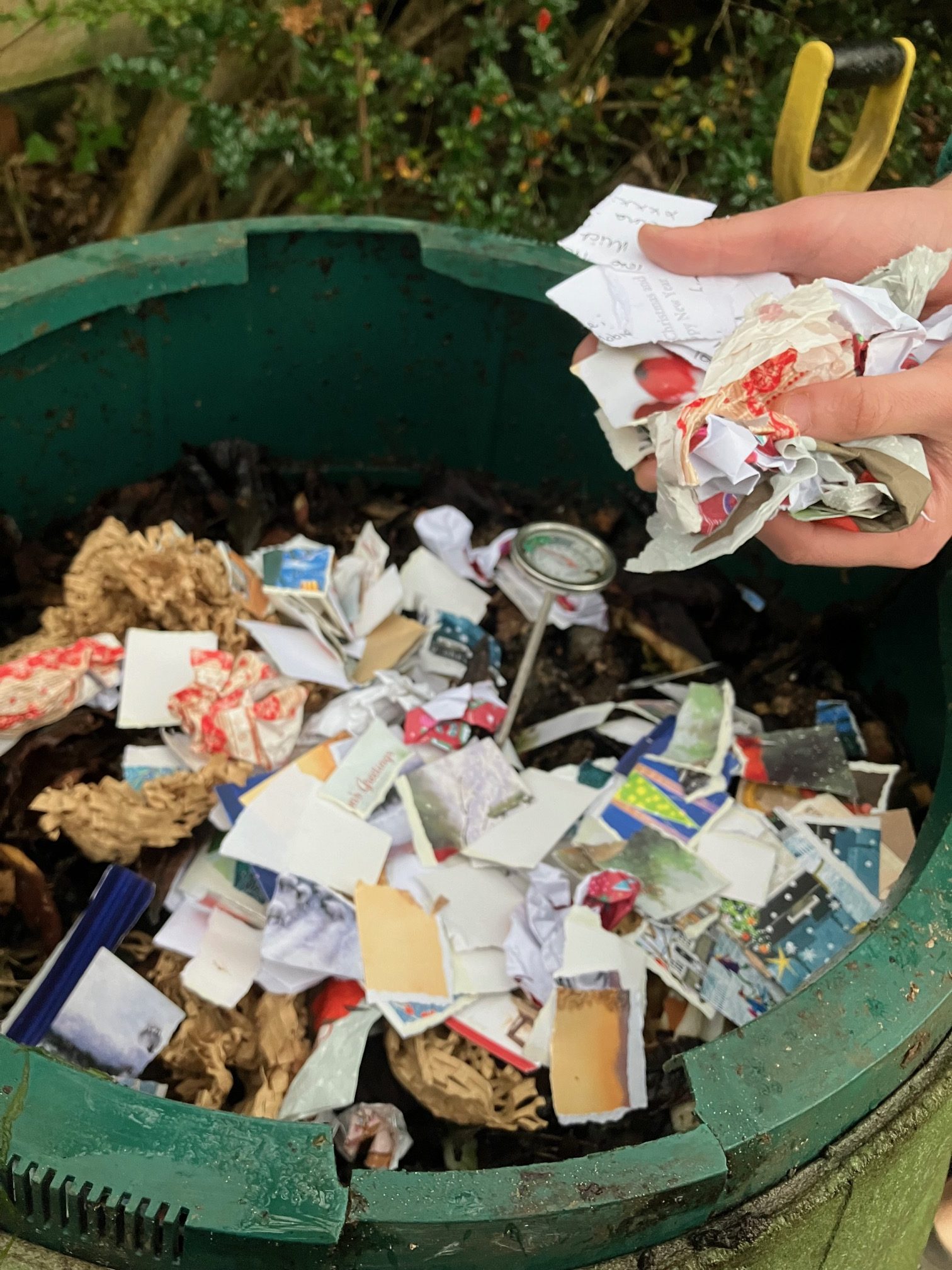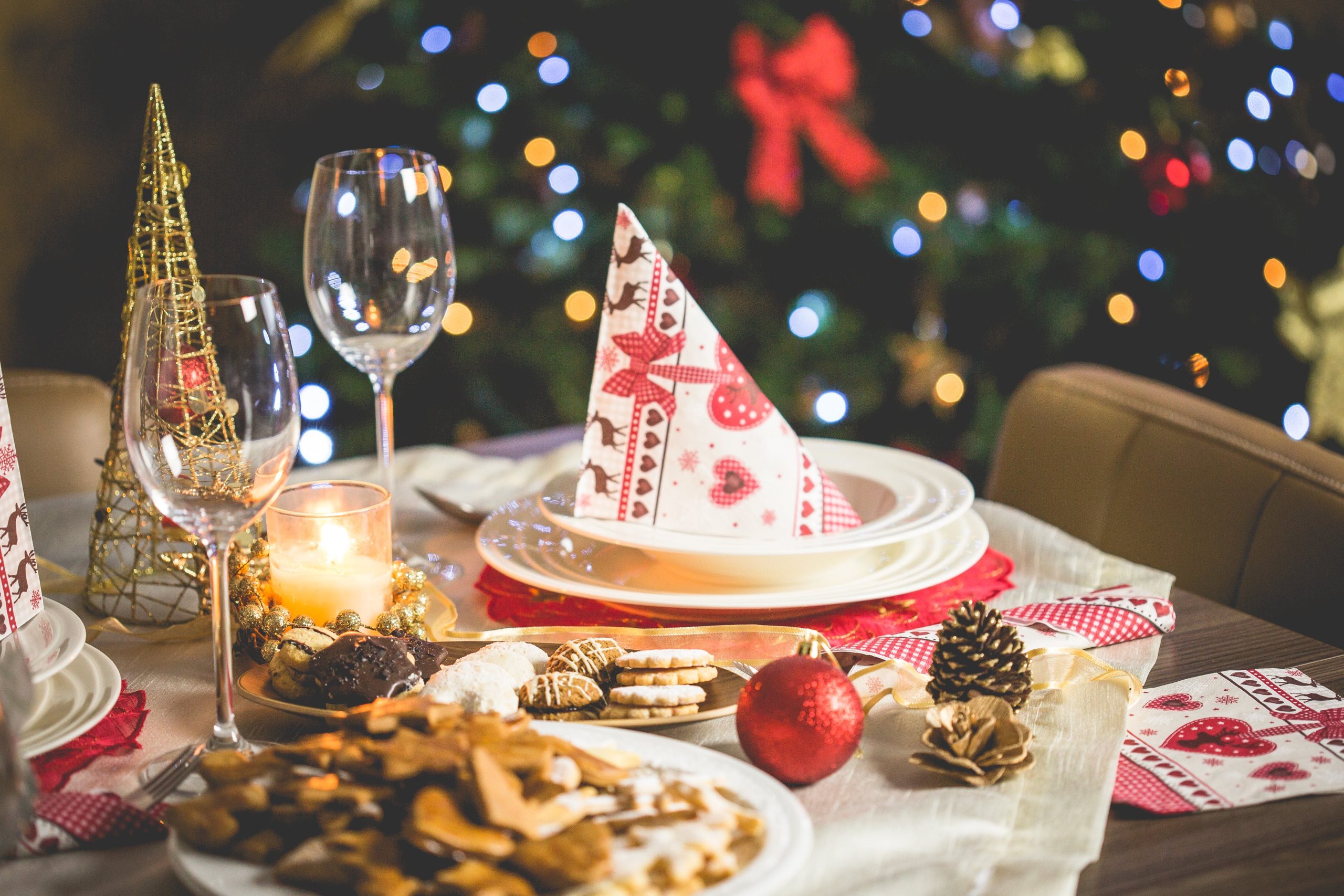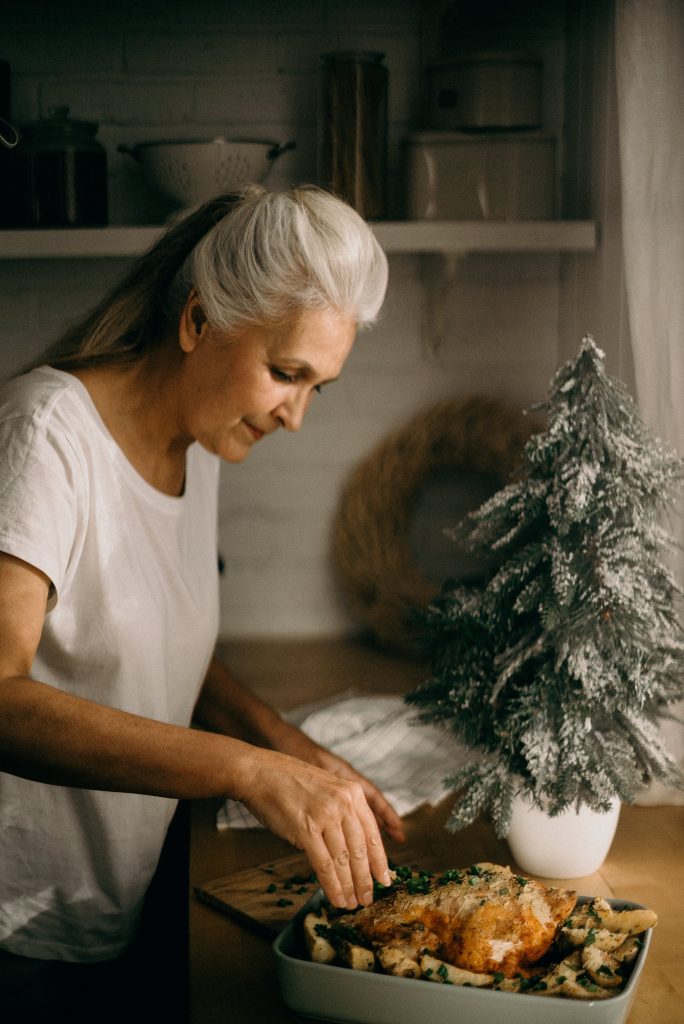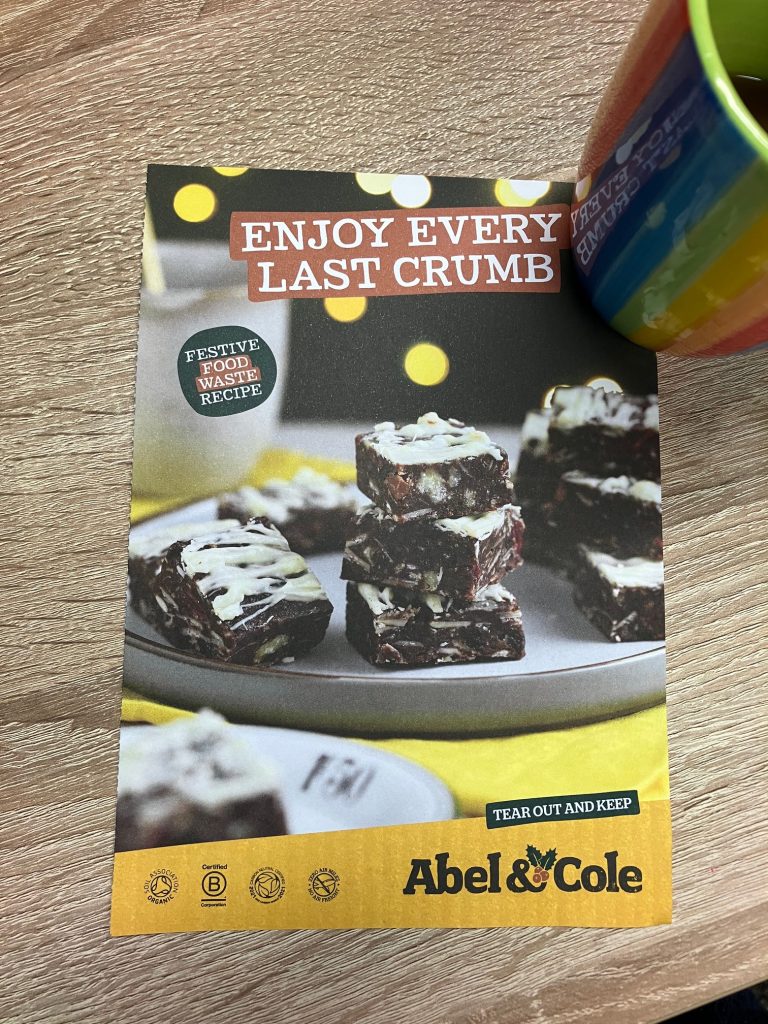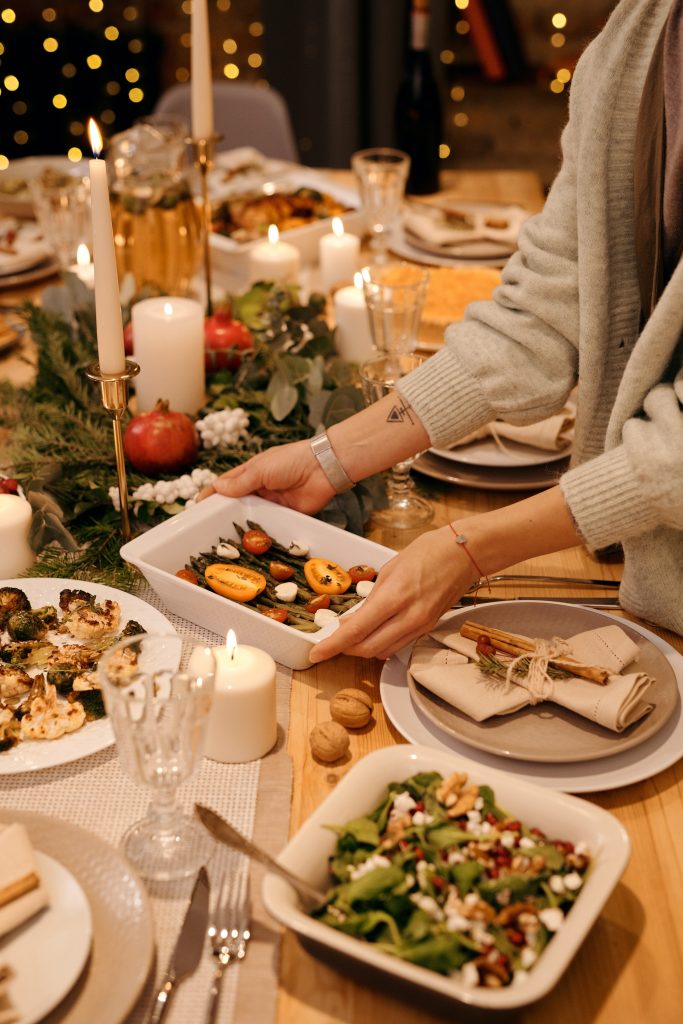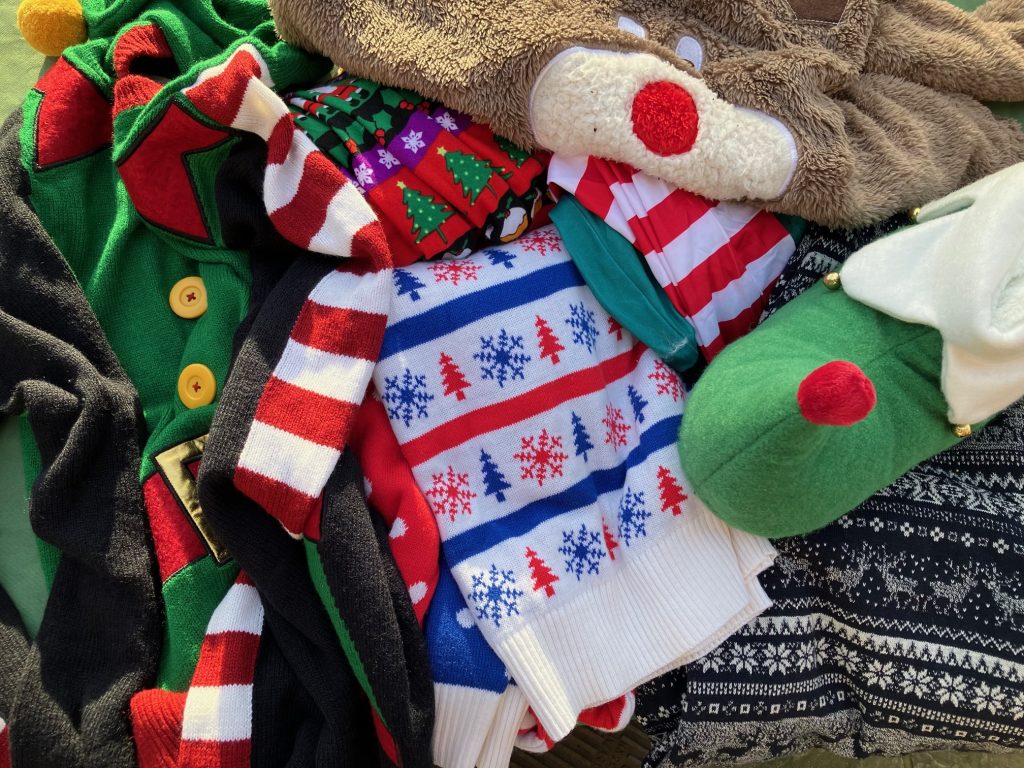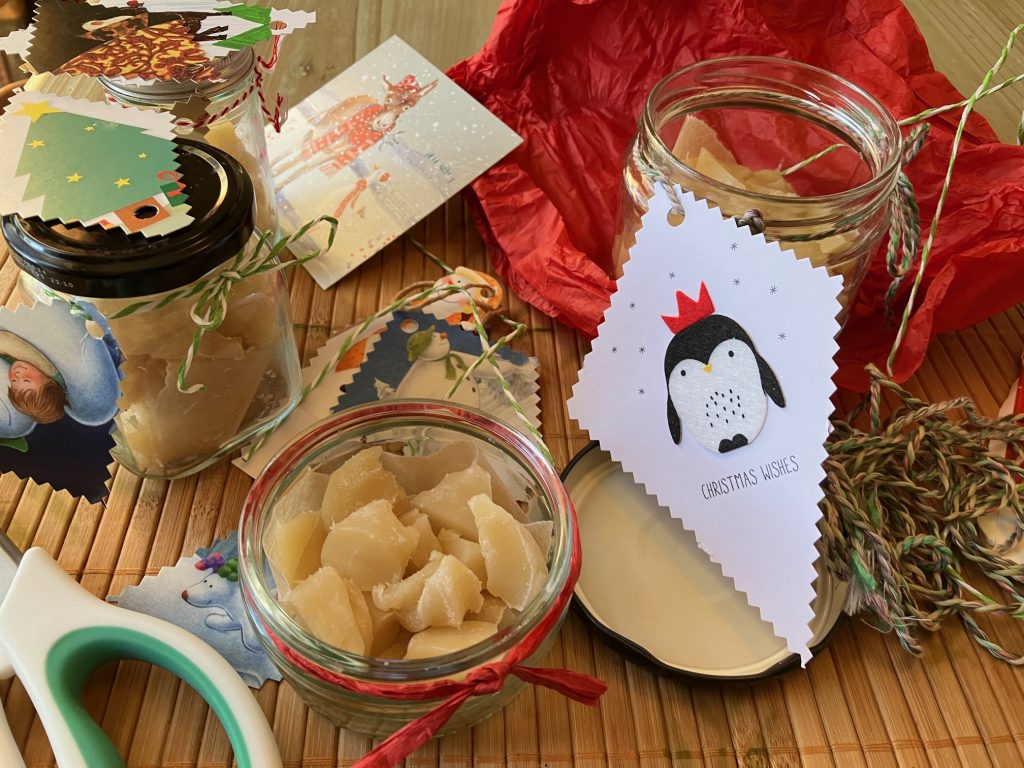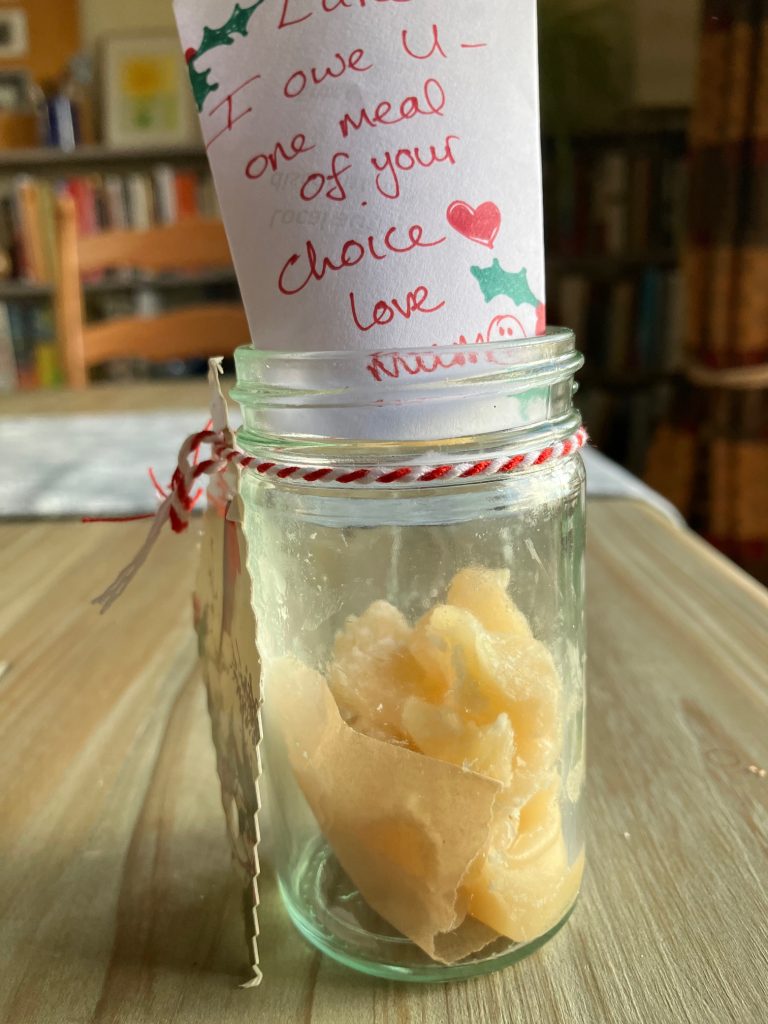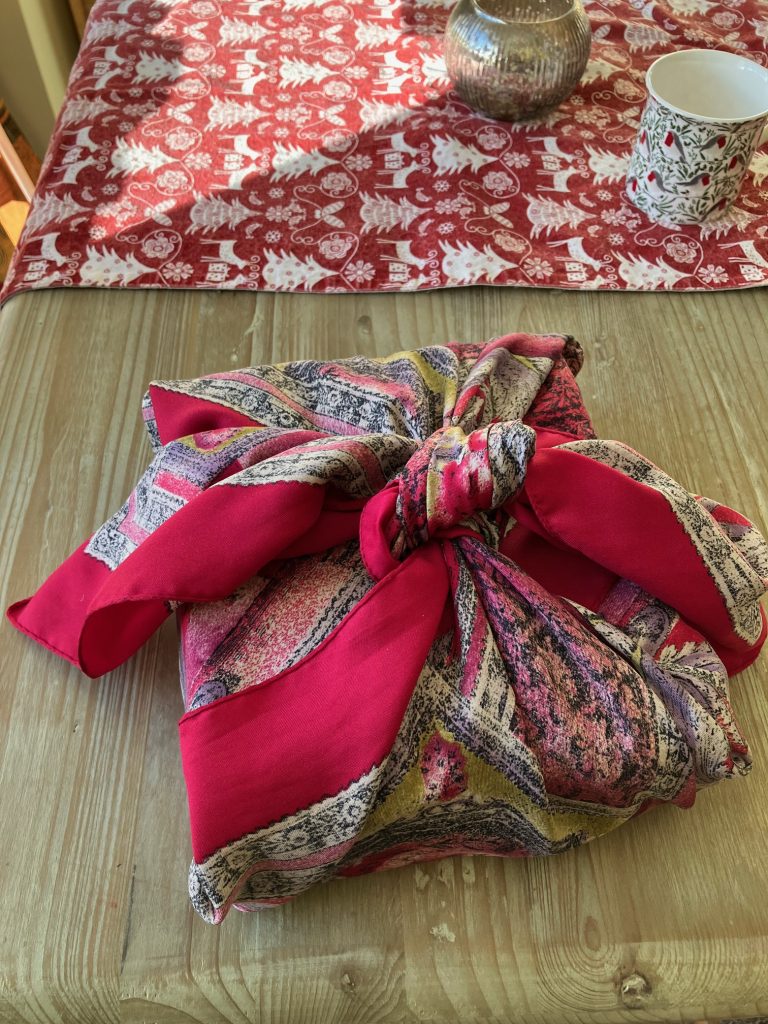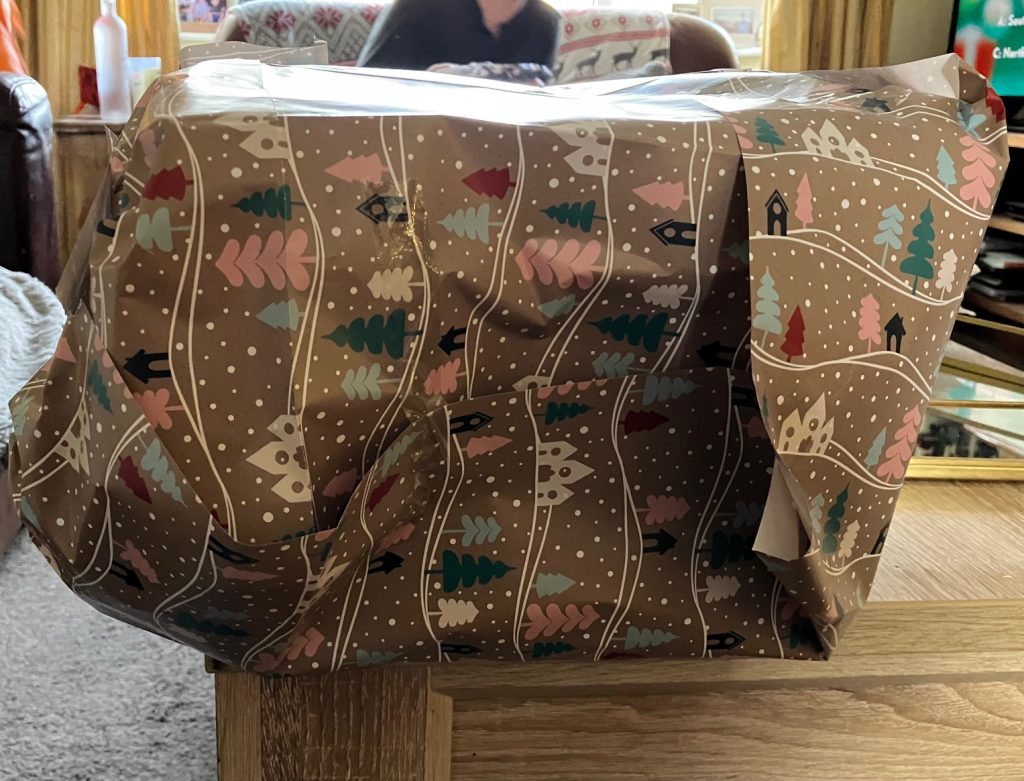‘Tis the season to be jolly glad you’ve got a composter.
Any unused food waste will now be breaking down in the compost bin along with suitable wrapping paper, and after the New Year you’ll have Christmas cards and perhaps a tree to recycle too. It all helps to reduce the gigantic waste mountain of the season, as well as avoiding scenes such as this, below, taken last year as general waste bins awaited post-Christmas collection.
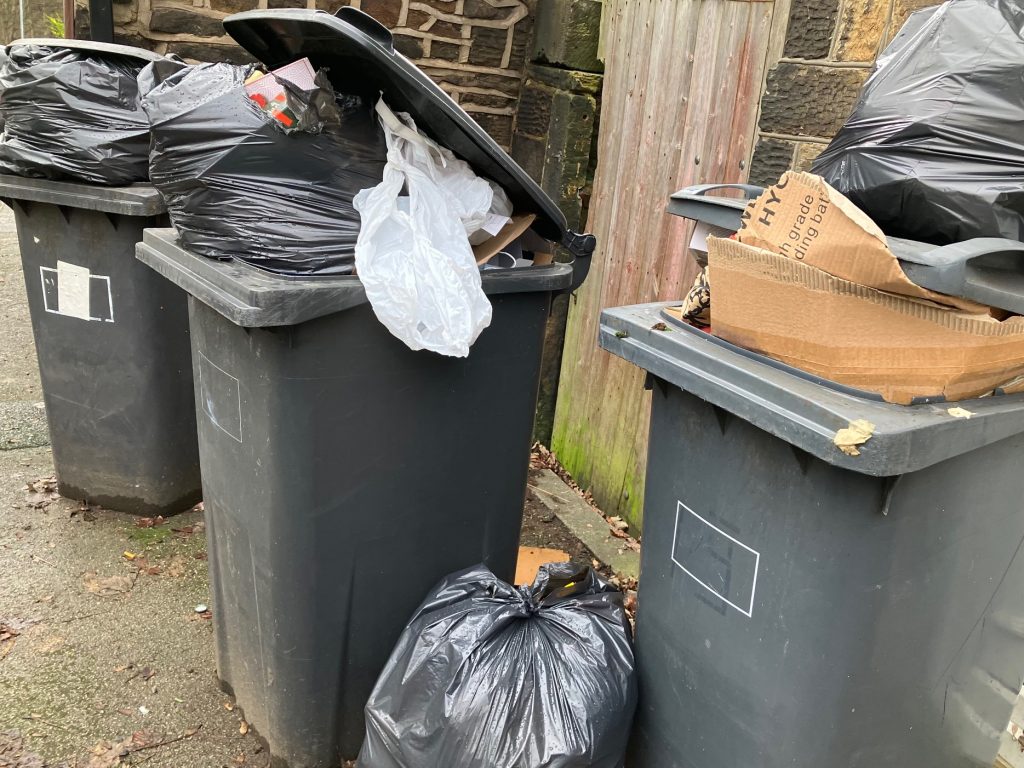
Our family used our food waste in several recipes, including one trying out our new air fryer by making leftover veg fritters. (Mash up your leftovers, form them into fritter shapes, brush both sides with vegetable oil. Air fry at 200C for 12 minutes, turning them over once.)
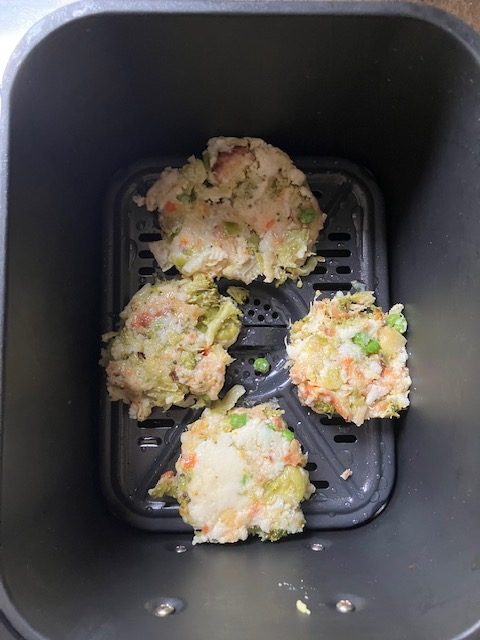
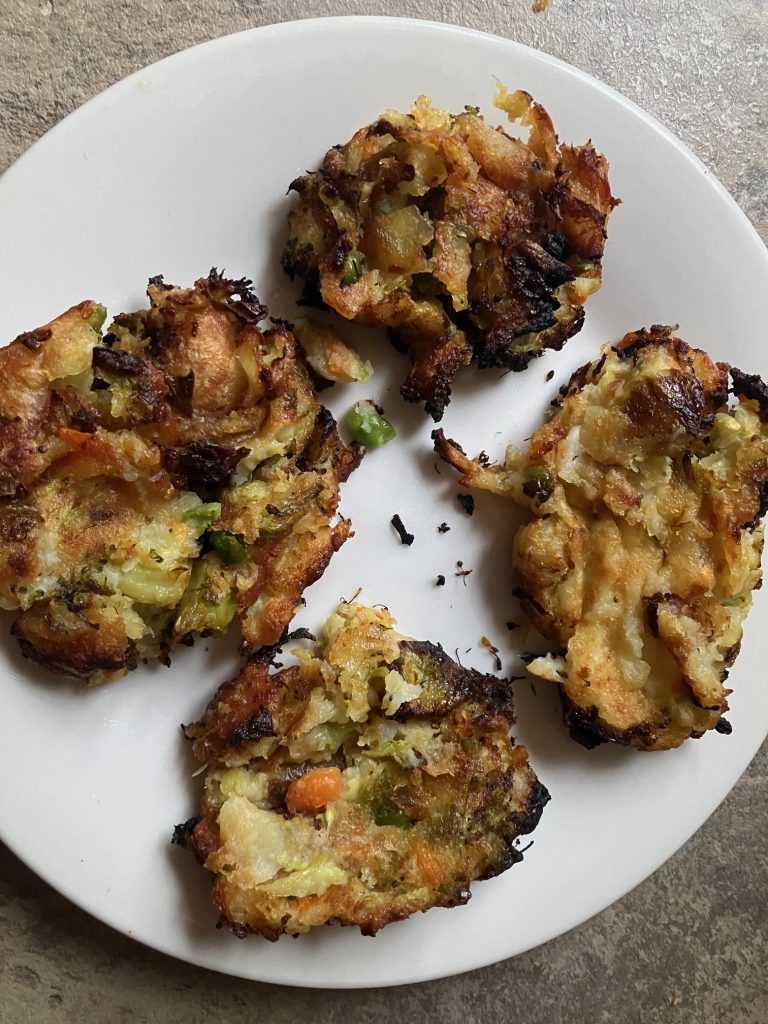
Leftover veg fritters – no, they’re not burnt, your device’s battery must be running low.
Keep in mind the following tips for recycling your festive waste.
Food waste
It’s good to know that after reusing or freezing your food waste, your leftover leftovers can be put to good use feeding the microbes in what I call the Bacteria Cafeteria in the composter.
Regarding composting food waste, we are sometimes asked about whether bones can be added to the Green Johanna. We hear many different stories from customers about this. Some tell us they add chicken carcasses to their Johanna and the bones disappear completely; others say bones have been stripped down but are still visible in the finished compost. This means that the bones need to be picked out of the compost and if you have dogs there could be a danger of them getting hold of the bones. For that reason, we don’t recommend that bones are added to the Johanna. They can be added to the Green Cone, however, which doesn’t produce compost.
We were fascinated to hear the experience of one customer who found a dead duck by her pond and disposed of the body in her Green Johanna. She said the duck disappeared – the only part that was visible when she came to remove the compost was the bill!
Packaging
Did I mention I’ve got an air fryer? I try to work it into most conversations. I know I’m a bit late to the party, but I like to wait until I’m sure some new-fangled thing really does work before I dip a toe in. Once I’m convinced about the air fryer I might move on to that Internet.
A sign of how composting can get under your skin is the joy I felt unpacking the air fryer and realising what great air pockets the craters in the cardboard packaging would make for the composting micro-organisms. The air fryer sat abandoned as I prioritised ripping up the cardboard.
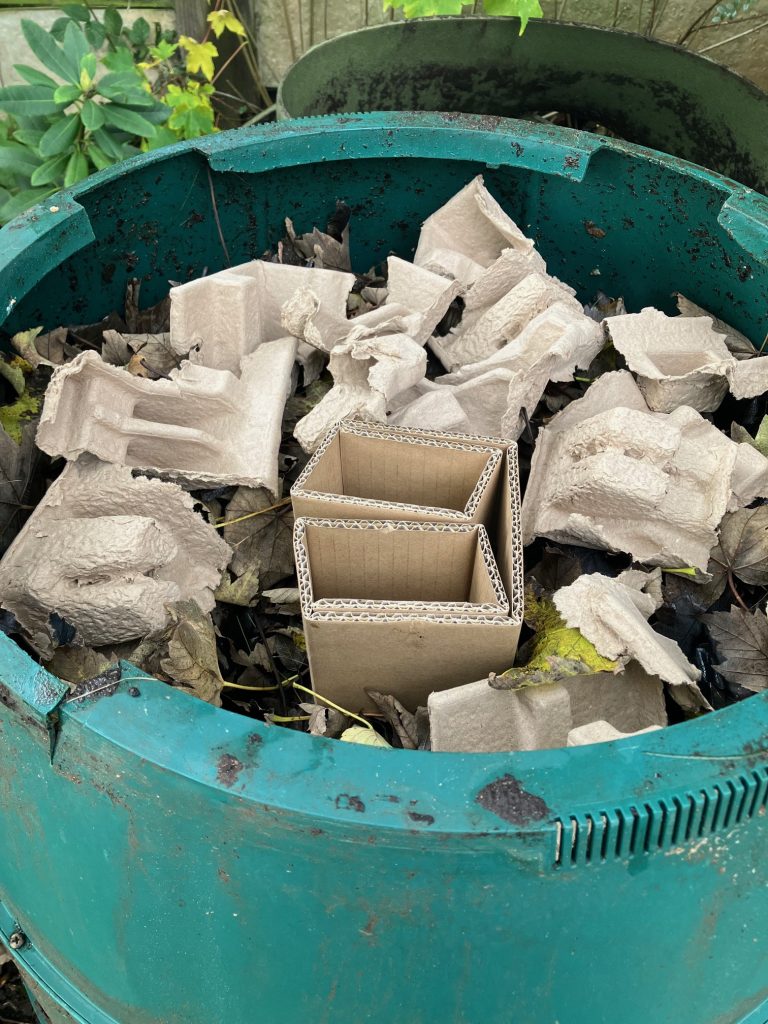
Perfect packaging for the compost bin
If cardboard is being sent to be recycled, flatten any boxes to save space. Keep them dry as they can’t be recycled if they get wet and go mouldy.
Christmas trees
You’ll soon be turning your mind to taking down the tree – unless you’re like a relative of ours who puts it up the day after Halloween and takes it down on Boxing Day.
The following tips from Rod Weston’s carryoncomposting.com website are useful.
- Shred the tree first to increase the surface area exposed to the composting microbes to speed decomposition. If a shredder is not available, branches can be cut into thumb-size pieces, but these will be slow to compost and it’s easier to donate the tree to the local authority to be shredded into chippings which are then used locally in parks. Local authorities often arrange drop-off points in January.
- Pine needles are tough with a waxy coating and take a long time to break down. Shred them first if you can and avoid dumping a lot of them in a thick layer. Mix them in with something that encourages airflow such as dead leaves or scrunched up newspaper. You could also make the most of their slow decomposition by sprinkling them over muddy paths. Pine needles are acidic when they fall from the tree but after composting they have a nearly neutral pH. (gardeningknowhow.com)
- There is increased interest among the eco-conscious in eating (yes, eating) various parts of the tree. I didn’t know until reading an article in The Observer that fir trees can be used in ice-cream, to pickle eggs and vegetables or crushed to flavour gin or vinegar.
Food experts say the needles can be used like rosemary or bay leaves in cooking, creating a flavour of citrus and pine. They’re also a good source of vitamin C. The wood can be burned to make pine ash, which can be used in gardens and for cleaning.
The baker and food writer Julia Georgallis, author of How to Eat Your Christmas Tree, has been working with Christmas trees for years. “You can pretty much eat the whole thing,” she says.
She recommends wearing gloves to handle a spruce tree, as they can be spiky. She hopes that eating pieces of their Christmas tree will help people to reconsider what is waste and what can be reused.
It’s important to use only organic trees, grown without pesticides. Fir, spruce, and pine are the most commonly bought trees and these are safe to eat but avoid cedar and cypress which are inedible. Yew trees are poisonous and should never be eaten.
Christmas cards
- Compost suitable cards to provide carbon content in your composter. Any cards decorated with glitter, foil, cellophane, plastic or anything laminated can’t be composted or recycled.

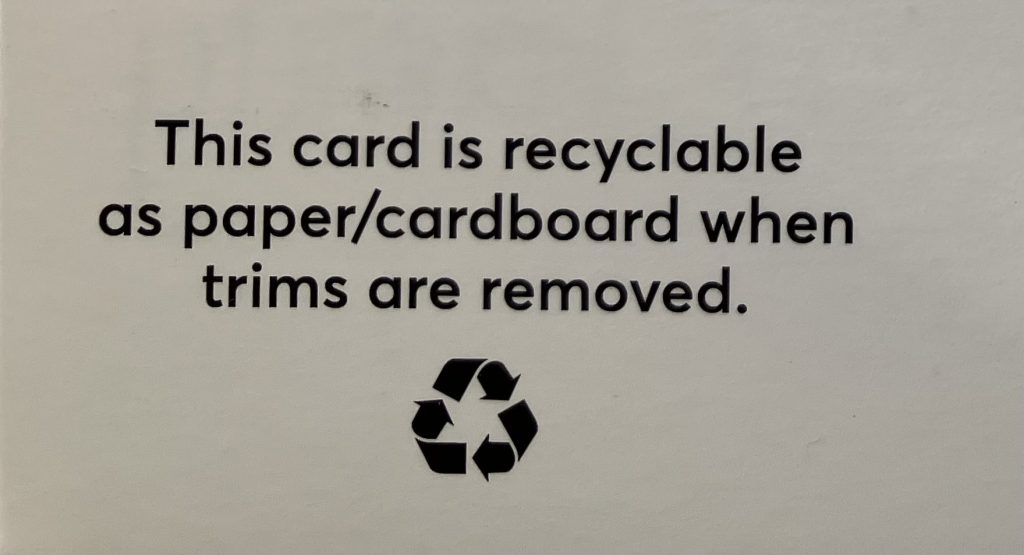
Parts of cards such as this, featuring gold ribbon and foil, should be disposed of in general waste, but the plain paper part can be torn off and composted or recycled.
- If recycling cards at supermarket drop-off points or household recycling sites, remember to remove any items that can’t be recycled, such as decorations mentioned above and batteries that might be in musical cards.
- Make gift tags: You don’t have to be creative to make gift tags from old cards – both Christmas cards and ordinary birthday cards – so you never have to buy them. Save string to use as tags. Or cut out images for children to make their own cards next year.
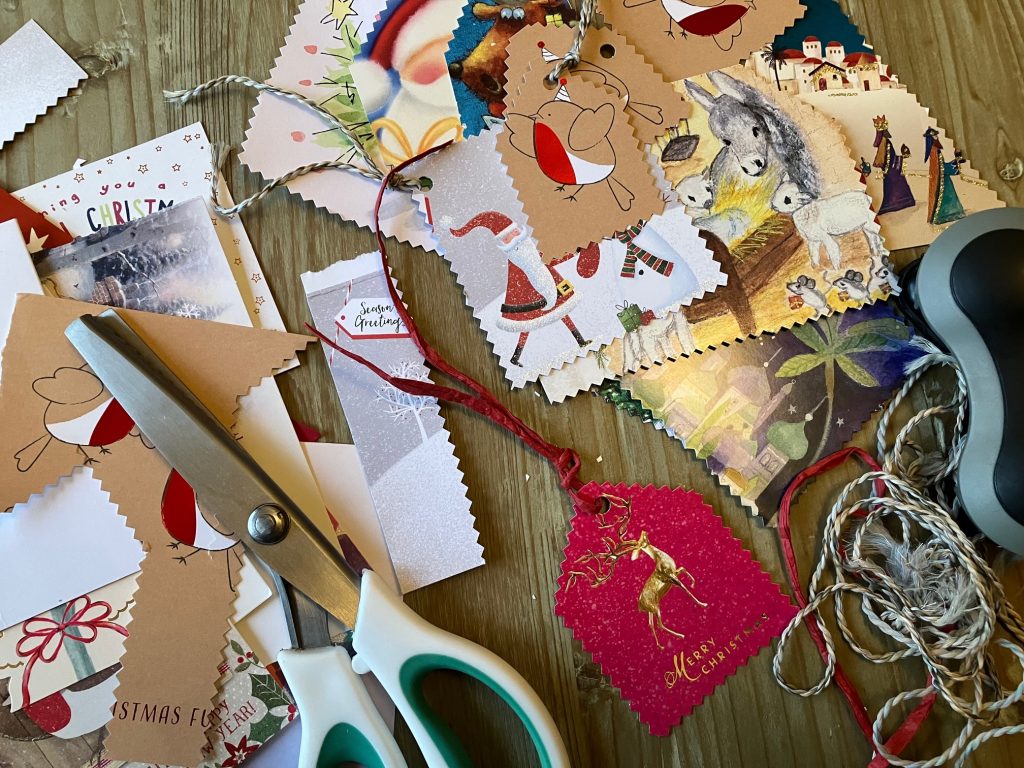
Make your own gift tags
- Make banners or bunting (easy to store, put up, take down) or turn cards into mini calendars.
- Schools can recycle cards by showing children how to turn them into postcards for next Christmas or festive bookmarks.
Wrapping paper
- Compost suitable, unadorned wrapping paper.
- Remember the slogan ‘Scrunch it to sort it’. If your wrapping paper stays in a ball when you scrunch it up it can be recycled (providing it’s not covered in glitter). If it unfurls itself, it can’t.
- Remove plastic tape.
- Reuse – I know I’m not the only person who goes round picking up wrapping paper as it’s discarded in the unwrapping frenzy. Smooth it out (iron if necessary) for reuse. It can also be used to line drawers.
Calendars
I came up with my own recycling idea as I was dismantling last year’s office calendar. It’s a Royal Academy calendar with beautiful pictures that I often use to make colourful wall displays.
The calendar pages have images but also the days of each month, of course. I use the pages as personalised gift wrap with the birthday girl or boy’s name emblazoned on the date.
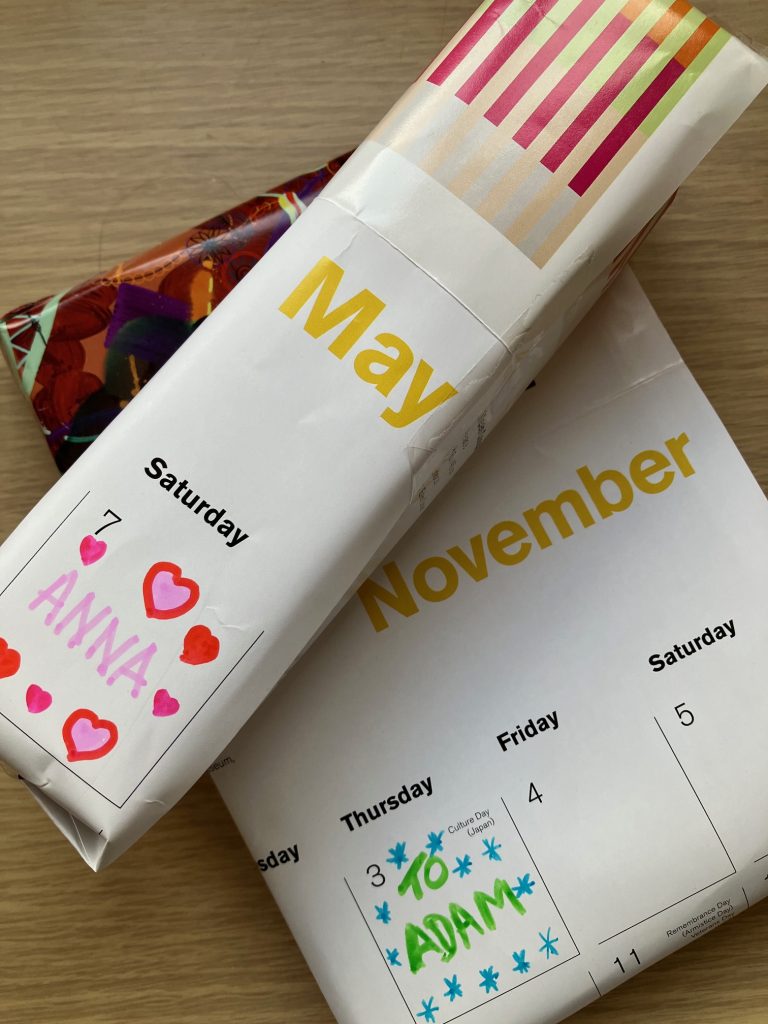
Corks
- Cork is compostable because it’s made from plant-based material from the bark of the cork oak tree – it grows back without harming the tree.
- Use as a carbon-rich input in compost, but not if the cork has been used as a stopper for chemicals.
- Check it’s real cork not plastic made to look like cork. Cut open to check.
- Break or chop up to compost quicker. You can also rub it on a grater to crumble the cork (although we find this time-consuming).
- A cork that’s added whole may not break down completely so pick it out and put it back through the composter.
- Remove plastic or foil or wax coverings.

Wreaths
Plant materials can be composted once any glue, plastic, glitter and wiring is removed. Holly is best shredded and used to make leaf mould separately.
Julie


